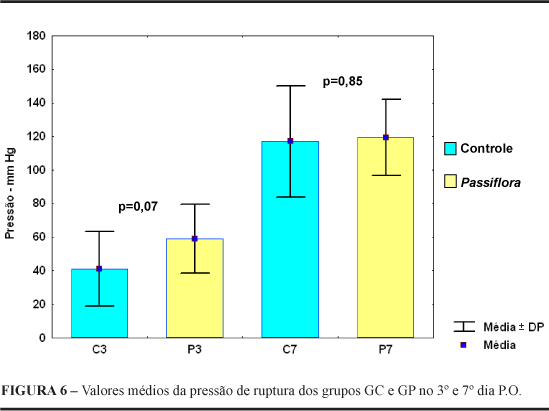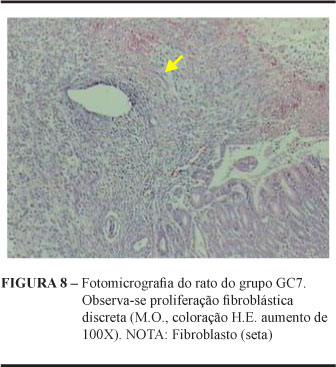INTRODUCTION: Many substances of vegetable origin have been used since the beginning of civilization with the purpose of improving the healing process. Among them, dry leaves extract from Passiflora edulis have been shown to have an anti-inflammatory effect in rats. PURPOSE: To analyze the effect of dry leaves extract from Passiflora edulis in the healing of gastric sutures in rats. METHODS: Forty male adult Wistar rats were divided into two groups of 20 rats, called Passiflora group (GP) and Control group (GC) which were divided into two groups of 10 according to moment of death, on day 3 or day 7 after the operation. All animals were submitted to a midline incision and a gastrotomy was performed on the anterior wall of the stomach followed by gastric suture with polypropylene 6.0 using four stitches on a single layer. Rats from GP were given, before closure of the abdominal wall, a solution of Passiflora edulis extract, 250 mg/kg/weight, while rats from the GC were given an isovolumetric isotonic saline solution. Macroscopic evaluation included the adhesion index proposed by Knightly. Bursting pressure was measure by an electronic device. Microscopic analysis was performed including inflammation parameters. RESULTS: All animals presented adequate healing of the abdominal wall with no clinical signs of infections or dehiscence. The adherence index was similar in both groups both on day 3 (p=0.734) and on day 7 (p=1.000). The gastric sutures presented leak with smaller insufflation pressure on the 3rd P.O. day in both groups as compared to the 3th P.O. day. There was no significant difference of bursting pressure among the subgroups on the 3rd P.O. day (GC3=41.1 ± 22.1 mmHg versus GP3=59.2 ± 20.4 mmHg; p=0.074). On the 7th P.O. day, there was an increased mean bursting pressure in both groups, but there was no statistically significant difference between the two groups (p=0.850). Histologic parameters were similar in both groups, on P.O. days 3 and day 7, except for the fibroblastic proliferation, which was greater on the 7th day in GP (p=0.002). CONCLUSION: The intraperitoneal use of Passiflora edulis extract influences favorably the healing of gastric sutures in rats because of the increase in the fibroblastic proliferation on the 7th P.O. day.
Passiflora edulis; Wound Healing; Rupture; Rats














